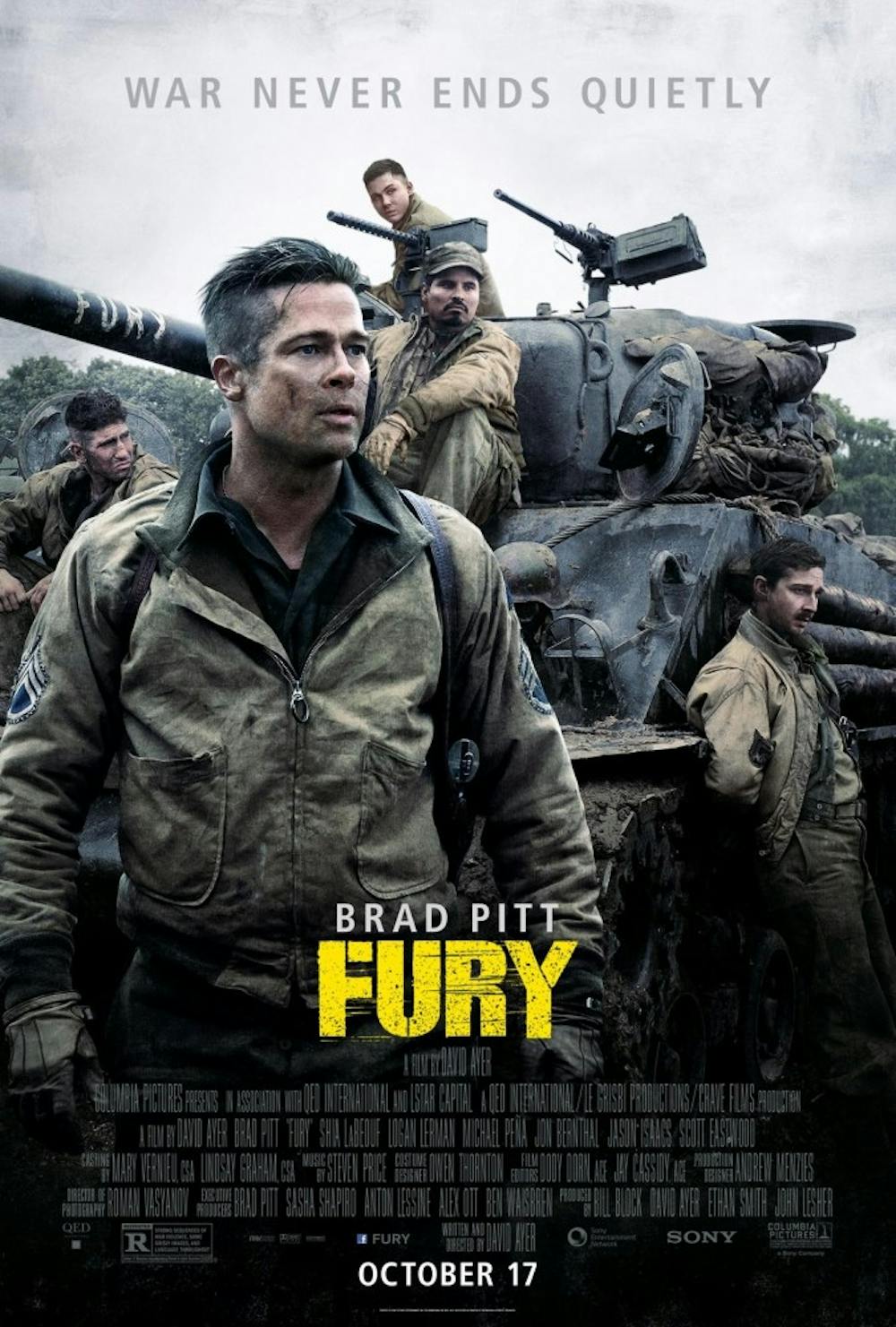SPOILER ALERT: The following review contains spoilers.
Newly-released war film“Fury” depicts a World War II tank crew fighting in Europe during the final days of the war. Much like the tank it is named after, the film grinds along carelessly through the muddy German countryside, smashing any hope for an inventive story that may lie in its path.
As WWII comes to a close, the Allied front makes its way toward Berlin, encountering heavy resistance from the remaining Wehrmacht. In the midst of this conflict is a tank named Fury, whose crew is the most intriguing feature of the movie. The easygoing driver (Michael Peña), coarse loader (Jon Bernthal of “Walking Dead”) and pious gunner (Shia LaBeouf, with a mustache) have been together since fighting in North Africa.
The bickering of the three companions underscores the strong bonds forged in hard times. After the death of their bow gunner, the crew is assigned a typist named Norman (Logan Lerman) who has been in the army for just eight weeks, and they are all shepherded by Staff Sergeant Wardaddy (Brad Pitt).
Pitt makes the role his own, and displays what is easily the most enjoyable acting in the film. He gives his character depth, prompting both the crew and the audience to wonder what is going on inside the staff sergeant's head. Pitt’s character in “Fury” kills just as many Nazis as his “Inglourious Basterds” counterpart, but he’s a much more nuanced soldier in this film. Wardaddy is often as cavalier as “Basterds”’ Aldo Raine, but his outburst with a captured SS trooper and his hallucinations of artillery fire reveal a man who has been scarred by war. This is his hell, not his playground.
Pitt steals the show when he and Norman find two German women hiding in an apartment after seizing a town. He shaves while Norman plays the piano, then insisting they sit down to a “proper meal.” In doing so, he creates an idyllic fantasy of life beyond the war in which he would be Norman’s father and not his commanding officer.
This short interlude offers a break from the violence and allows the audience a few minutes to contemplate the characters’ motives. Action resumes when the crew breaks into the apartment and smashes Wardaddy’s delusional game of house, wrenching him (and the audience) back to harsh reality.
The movie is elevated by this sort of vignette, but fails when it steers away from asking deeper questions in favor of more violence. The landscape which the tank trundles through is perpetually dreary, the pockmarked meadows seemingly filmed with a sepia filter. This detail leaves the audience wanting to explore the mental landscapes of the crew, but instead the movie dispenses more blood and gore.
“Fury” grabs the viewer and repeatedly shouts “War is hell!” as it puts terror and loss on full display. While depicting war as dehumanizing is a worthy goal, the movie botches its mission by abandoning realism.
The audience is introduced to the inner workings of a Sherman tank through the young eyes of Norman, who undergoes a twisted coming-of-age story. As someone who has never killed before joining the crew, Norman is understandably disturbed by the horrors which initially surround him. But after Wardaddy forces him to shoot an unarmed prisoner, Norman is more or less emotionally unscathed. In a few days, he is effortlessly mowing down enemy soldiers. Though his transformation was intended to depict the way in which war can corrupt, the lack of any psychological impact makes the change so unrealistic change that it falls flat.
The movie ends with a last stand in which the crew faces off against more than 300 SS troops. With history disregarded, the crew manages to slaughter scores of the SS and single-handedly prevent the Nazi advance. The SS appear as inept as the stormtroopers of “Star Wars,” sacrificing at least 100 men to defeat a band of five, even though the movie labels them Nazi elite. War is difficult to judge in earnest when a fictional WWII skirmish is painted as Thermopylae in “300,” but with guns.
After the two-hour mark, viewers are left with the impression filmmakers ran out of ideas and simply said, “Let’s have them all die.” Since a disproportionate amount of the film has already been dedicated to gunfire and killing, cramming more fails to deliver a satisfying ending.
Despite strong acting and interesting visuals, “Fury” falls short of its potential as a war film. Its departure from realism and avoidance of character development leaves gaping holes in its heavy armor.





